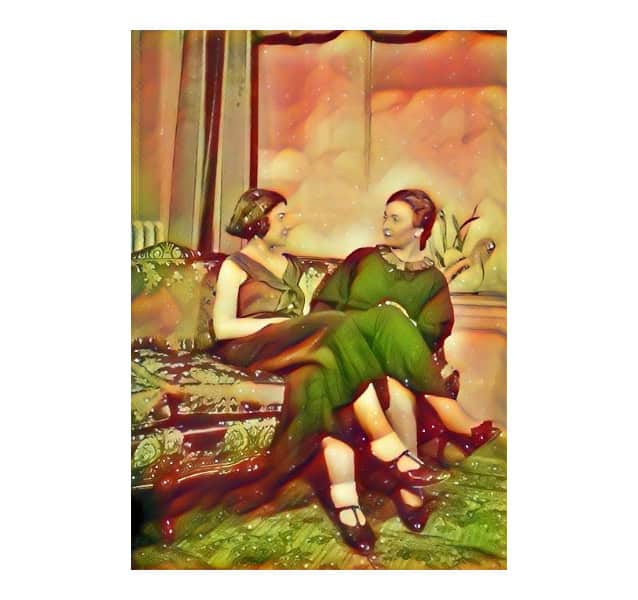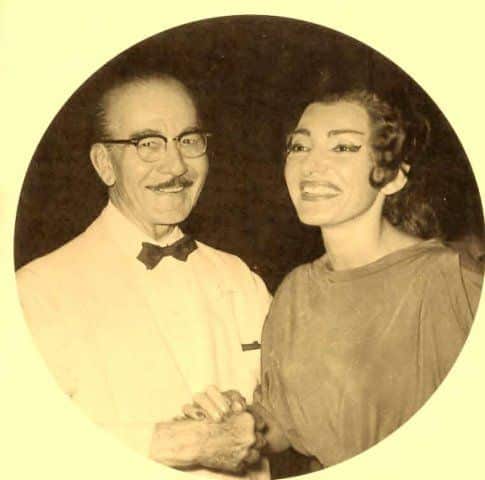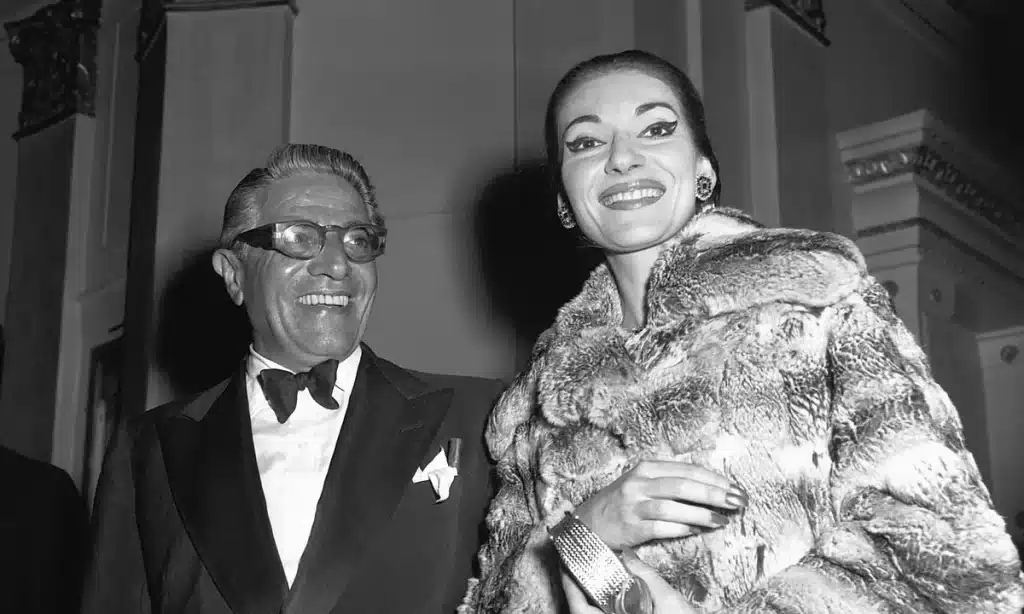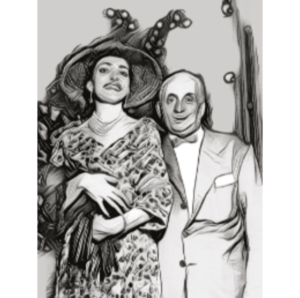
Maria Callas: A Triump Full Of Sadness.
Many consider Maria Callas the epitome of 20th-century opera, praising her unparalleled performances and masterful technique. People often called her ‘Divina,’ meaning divine, because of her transformative impact on lyrical singing. With her multifaceted artistry and exceptional musical education, Callas redefined opera so profoundly that her career marks a dividing line in the art form’s history. Audiences still regard many of her performances as unrepeatable, while her charm and mystique endure. As a symbol of both Greece and opera, Callas continues to captivate, and a museum preserves her remarkable legacy.
Maria Callas: A Triumph Full Of Sadness in Her Complex Identity
Born Maria Kalogeropoulou in New York on December 2, 1923, Callas’s early years were far from glamorous. She grew up as an awkward, overweight girl in Athens, never quite shaking the burden of her evolving public persona. Later, she would reflect on the complexity of her identity, saying, “I am a person without identity. Although I was born to Greek parents, I have never truly felt Greek. Having been born in America doesn’t make me feel American either. I spent much of my career in Italy and even married an Italian, yet I don’t identify as Italian. Now, I reside in Paris, but that doesn’t mean I feel French What am I? I am alone, always alone.”
In 1947, Callas made a pivotal decision that marked the beginning of her international career: she changed her last name from Kalogeropoulou to Callas. This transformation coincided with her Italian opera debut in La Gioconda at the Arena di Verona. Her powerful voice and dramatic stage presence soon made her a global sensation. However, personal and professional challenges, including her tumultuous relationship with Aristotle Onassis, deeply affected her career.
She died on September 16, 1977, at the age of 53.
Maria Callas: A Triumph Full Of Sadness Through the Influence of Elvira de Hidalgo

Several mentors, most notably Spanish soprano Elvira de Hidalgo, shaped Maria Callas’s journey in opera. When Callas began studying at the National Conservatory of Athens in the late 1930s, de Hidalgo immediately recognized her talent. She nurtured Callas’s natural stage presence and voice, teaching her the intricacies of bel canto. This early technical training allowed Callas to master challenging roles later in her career.
Her persistence paid off when, in 1941, she sang her first professional role as Beatrice in Boccaccio. Despite the difficult circumstances—both in her personal life and in war-torn Greece—Callas forged ahead. By 1945, she left Greece for New York, seeking greater opportunities. This marked the end of her Greek career but the beginning of her rise to global fame.
Maria Callas: A Triumph Full Of Sadness in Her Relationship with Her Mother, Elmina Evangelia “Litsa” Demes

Maria Callas had a complex relationship with her family, particularly with her mother, Elmina Evangelia “Litsa” Demes. Litsa, disappointed by Maria’s birth, favored her elder daughter and pressured Maria to sing from a young age, a demand Maria deeply resented. Their relationship deteriorated further during the Axis occupation of Greece, when Maria felt forced into uncomfortable situations to support the family. In time, she severed all ties with her mother, with whom she never reconciled.
Callas also experienced a strained relationship with her father, George Kalogeropoulos. Although less tumultuous, the bond deteriorated over time, especially after her parents’ separation. Eventually, Callas distanced herself from both parents, fed up with their selfishness and manipulation.
Elmina Evangelia “Litsa” Demes’s Book
Maria Callas’s mother, Evangelia “Litsa” Demes, wrote a book titled “My Daughter Maria Callas” (1960). This book, published during Callas’s lifetime, contributed to the public’s interest in the complex relationship between mother and daughter. However, the book was criticized for being a work of fiction masquerading as a memoir.
The tone of “My Daughter Maria Callas” by Evangelia “Litsa” Demes is critical and self-justifying. The book portrays Litsa as neurotic and childish, and it tells the story of how Callas couldn’t wait to get away and stay away from her mother. The narrative portrays Litsa as neurotic and childish, focusing on her perspective, which often criticizes Maria Callas.
It is known that the book did not reconcile the estranged mother and daughter. The book was part of a series of memoirs and biographies that followed Callas’s death, including several by members of her own family.
Maria Callas: A Triumph Full Of Sadness in Her Relationship with Her Father, George Kalogeropoulos

Maria Callas’s relationship with her father, George Kalogeropoulos, was not as tumultuous as with her mother, Elmina Evangelia “Litsa” Demes. George was unhappy with his wife favoring their elder daughter, Maria, and the pressure put upon young Maria to sing and perform. The marriage continued to deteriorate, and in 1937, Litsa returned to Athens with her two daughters. After the separation, George did not play a significant role in Maria Callas’ life, and she did not reconcile with him.
Sadly, her father, George Kalogeropoulos, wasn’t better than her mother. He wrote a letter to Callas pretending he was dying in a hospital, but the singer found out he had a minor ailment. Callas wrote that she was fed up with her selfish parents and didn’t want contact. “I hope the newspapers don’t catch on. Then I’ll curse when I have any parents at all.”
Callas’ father, George Kalogeropoulos, was an easy-going and unambitious man with no interest in the arts. At the same time, her mother, Litsa, was socially ambitious and had dreamed of a life in the arts. The couple’s mismatched personalities and Litsa’s questionable lifestyle, which included not only pushing her daughters into degrading situations to support her but also entertaining Italian and German soldiers during the Axis occupation of Greece during World War II, led to the deterioration of their marriage.
Maria Callas and Giovanni Battista Meneghini
In 1947, Callas met Giovanni Battista Meneghini, a wealthy Italian businessman who became her manager and husband. Despite a 28-year age gap, their relationship lasted 12 years, with 10 of those as a married couple. Meneghini played a central role in Callas’s career, though his involvement was often viewed as overbearing. Their relationship ended abruptly in 1959 when Callas left him for Aristotle Onassis. Meneghini, deeply hurt, shared his side of the story in a memoir, which shed light on both their professional and personal lives.
The Turbulent Affair with Aristotle Onassis

Callas’s relationship with Aristotle Onassis, one of the most powerful men in the world, was both passionate and destructive. Their affair, which began in 1957, caused a media sensation, especially since Onassis was married to Athina Livanos at the time. The affair contributed to Callas’s split from Meneghini, and although she hoped for a long-term future with Onassis, he married Jackie Kennedy in 1968. This event devastated Callas, who never fully recovered emotionally.
Onassis’s treatment of Callas was, at times, abusive, with disturbing accounts of manipulation and threats. These experiences left Callas deeply scarred, contributing to her declining health and eventual isolation.
The Legacy of Maria Callas
Maria Callas’s life was marked by extraordinary artistic achievements and personal turmoil. Despite her remarkable talent, her sense of loneliness and complex relationships with her family, husbands, and lovers weighed heavily on her. Her tumultuous affair with Onassis, in particular, took a significant toll on her emotional and physical well-being, contributing to the decline of her career and her early death. Today, Callas is remembered not just as a legendary soprano but as a woman who faced great personal struggles amid her unprecedented success.
https://www.biography.com/musicians/maria-callas
https://www.medici.tv/en/artists/maria-callas
https://www.npr.org/2023/12/02/1216549233/maria-callas-the-soprano-of-the-century


You May Also Like

Judy Garland: A Life of Fame, Struggles, and Triumph.
October 15, 2024


